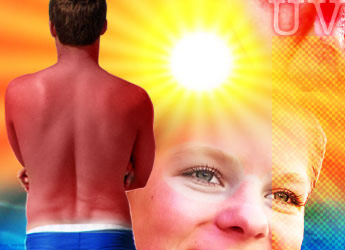Sun Smarts: Survey Reveals Savviest Cities

Residents of the nation's capital are the most sun protection-savvy urban dwellers in the country, according to a new survey of 32 cities.
Washington, D.C., was ranked No. 1 in the American Academy of Dermatology's national online survey of a total of 3,342 adult respondents, with questions about their attitudes and knowledge about common tanning and sunshine myths. Cities were ranked based on the percentage of subjects who scored As and Bs.
A total of 47 percent of D.C. residents received As and Bs, followed closely by New York City, Miami, Tampa and Los Angeles.
Chicago residents ranked as the least sun-smart, according to the AAD, with only 21 percent of residents scoring As and Bs.
Overall, 35 percent of the national public scored above average. Subjects were randomly recruited to the survey in February 2007 from a national group that closely reflects the demographics of the U.S. population.
Sun exposure causes 90 percent of all skin cancers, according to the Skin Cancer Foundation, and more than 1 million new cases of skin cancer are diagnosed each year. Melanoma, one of the three most common skin cancers, kills some 8,000 U.S. residents a year, the AAD says.
Overturned myths
Sign up for the Live Science daily newsletter now
Get the world’s most fascinating discoveries delivered straight to your inbox.
Residents of the nation's capital nearly aced three survey questions compared to other polled city residents, including one about the statement, "People look healthier with a tan," AAD President Diane R. Baker said. A total of 45 percent of those surveyed in the District of Columbia disagreed with the statement, the highest percent of all the other cities' respondents.
"District of Columbia residents also weren't fooled by the statement, 'It is smarter to tan indoors using a tanning bed where ultraviolet rays can be controlled," Baker said. "Specifically, 68 percent of adults in the nation's capital disagreed with this statement versus 58 percent of adults polled across all cities."
When asked whether "Getting a base tan is a healthy way to protect skin from sun damage," D.C. residents also rated significantly higher than average and correctly disagreed with the statement.
Laissez-faire Chicagoans
Meanwhile, Chicagoans take a laissez-faire approach to sun protection, Baker said. When asked if they agree or disagree with the statement, "I prefer to enjoy sunshine and not worry about what I should do to protect myself from it," 41 percent agreed, the highest number of respondents across all cities.
A high proportion (40 percent) of Chicago residents said the climate in which they live was a reason why they didn't worry about skin cancer, implying that they think their shorter summers means the sun couldn't damage their skin significantly.
"The notion that only people living in year-round sunny climates are prone to developing skin cancer is completely untrue," said Baker in a prepared statement. "As dermatologists, we treat skin cancer patients living in all areas of the country—from big cities to small towns, in tropical climates and snowbelt states."
Some 80 percent of the sun's UV rays can pass through light clouds, mist and fog, she said.
The full rankings of the 32 metropolitan areas:
1. Washington, D.C. 2. New York City 3. Miami 4. Tampa 5. Los Angeles 6. Dallas 7. Salt Lake City 8. San Franciso 9. Atlanta, Idaho area, Philadelphia (tied) 12. Phoenix 13. Portland, Ore. 14. Vermont area 15. Baltimore, Boston, Providence (tied) 18. Hartford; Riverside, Calif. (tied) 20. Houston 21. Denver, New Hampshire area, St. Louis (tied) 24. Cincinnati, San Diego (tied) 26. Detroit 27. Cleveland, Minneapolis (tied) 29. Seattle 30. Pittsburgh 31. Maine area 32. Chicago
Robin Lloyd was a senior editor at Space.com and Live Science from 2007 to 2009. She holds a B.A. degree in sociology from Smith College and a Ph.D. and M.A. degree in sociology from the University of California at Santa Barbara. She is currently a freelance science writer based in New York City and a contributing editor at Scientific American, as well as an adjunct professor at New York University's Science, Health and Environmental Reporting Program.










